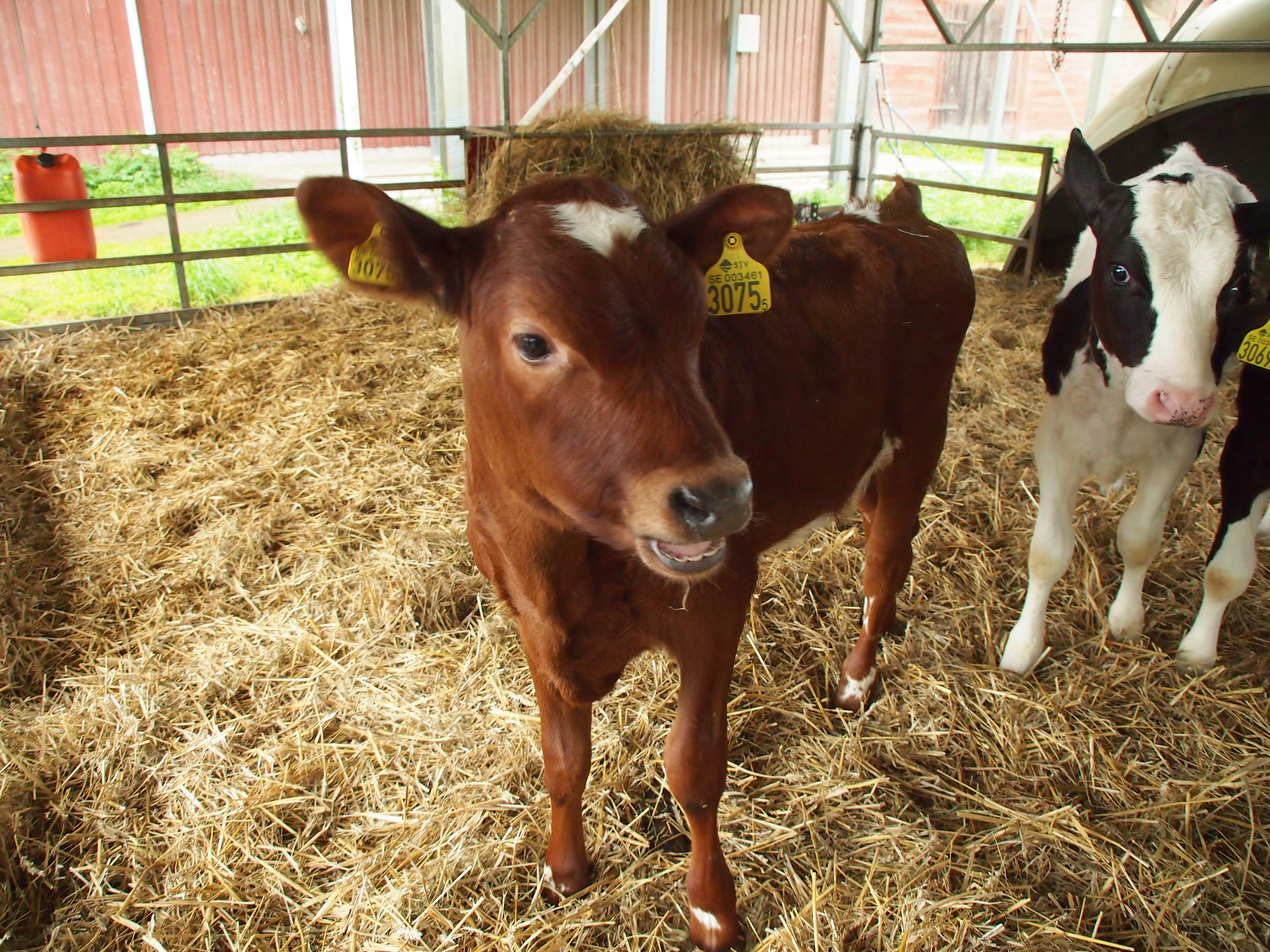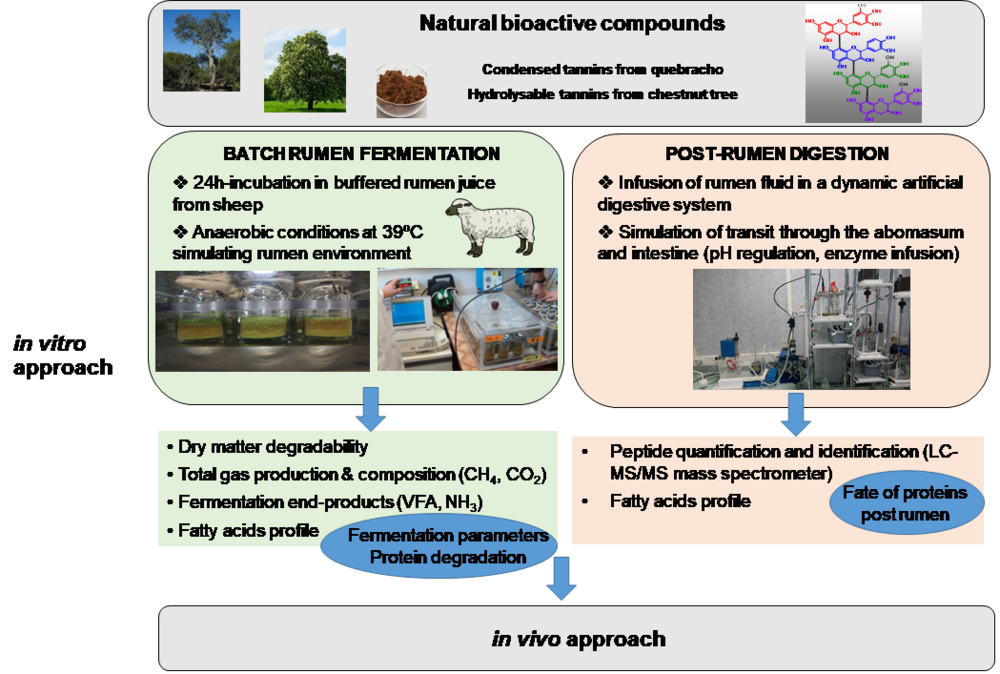Tannin extracts to modulate ruminant digestion and reduce environmental impacts
To balance productivity, reduce pollutant emissions by the ruminants and improve product quality, the use of natural compounds with bioactivity on digestive processes, namely tannin extracts, is investigated in the ProYoungStock project

Tannins are a class of plant polyphenols with diversified structures and characterized by protein-binding ability and anti-microbial activities. Consequently, tannins can modify rumen digestion processes through fibre degradation, protein and lipid metabolism with a potential effect on nutrient use efficiency, pollutants (enteric methane and urinary nitrogen) released by the animal, and fatty acids profiles in meat and milk.
A first in vitro* trial was carried out to compare the effect of addition of two tannin extracts differing by their origin and tannin type (condensed tannins from quebracho and hydrolysable tannins from chestnut tree) on the rumen digestion of vetch green forage or hay corresponding to contrasted availability of pasture along the year in Mediterranean areas. The results indicate that overall, both tannin extracts depressed fermentation, methane production and fatty acid biohydrogenation in a dose-dependent manner. Reducing biohydrogenation has the potential to improve ruminant product healthiness, thanks to the increase of polyunsaturated fatty acids. On the other hand, the mixture of condensed and hydrolysable tannins was found to be more effective in protecting proteins from rumen degradation, probably thanks to an enlarged binding spectrum, especially in the presence of hay, a low protein substrate. Better protecting proteins from rumen degradation results in increase of duodenal flow of nitrogen and reduction of nitrogen excretion into the environment.
Complementary to the rumen fermentation assay and to better understand the fate of dietary protein throughout the digestive tract of ruminants, an original trial was carried out. Standardized ruminal fluid from sheep was infused daily with a solution of tannins from quebracho and chestnut tree through a cannula and was introduced into a dynamic artificial digestive system, which simulated the transit of digesta under physicochemical conditions mimicking the abomasum and intestine in terms of pH regulation, digestive enzyme infusions and transit rate. Samples were taken throughout the simulated digestion process, and after extraction, peptides were identified and quantified using liquid chromatography coupled to mass spectrometry. The first results showed the influence of tannins on the abomasum proteolysis in terms of protein accessibility, itself related to the cellular localization of the proteins in the plant cells.
To validate the results obtained in vitro and to assess the potential of tannin extracts in practical conditions, in vivo trials were performed in Italy with dairy cows during wet and dry seasons, including also the effect on milk quality and cheese quality. In Sicily, in April, when pasture is available, and July, when diet relies on hay, we carried out an experiment on Modicana cows (a local double purpose breed, which milking requires the calf presence). In an extensive farm, two groups of cows were reared following the traditional system in which animals graze and receive concentrate supplementation twice per day at milking. For one group of animals, a tannin extract was included in the concentrate. The treatment lasted 22 days in both the seasons and individual milk was collected, sampled and analysed for quality parameters. Moreover, since Modicana’s milk is mainly processed into cheese, at the beginning and end and of the trials, cheese was produced from individual milk. ripened and analysed. The preliminary results concerning milk urea nitrogen and cheese colour show that tannins seem to exert a more evident effect in the dry season (July) when poor-quality hay is available compared to April when animals graze high nutritive value pasture.
Figure legend:
Complementary in vitro (rumen and post-rumen digestion assays) and in vivo approaches (includes personal and copyright-free photos)

* In vitro studies are performed with microorganisms, cells, or biological molecules outside their normal biological context. Studies that are in vivo are those in which the effects of various biological entities are tested on whole, living organisms or cells when they are in their natural place.
Authors info
NIDERKORN V.1, MENCI R.2 , COPPA M1., NATALELLO A.2, PRIOLO A.2, LUCIANO G.2
1INRAE, Université Clermont Auvergne, Vetagro Sup, UMRH, 63122, Saint-Genès-Champanelle, France. Email: vincent.niderkorn@inrae.fr
2 Department Di3A, University of Catania, via Valdisavoia 5, 95123 Catania, Italy
3 Independent researcher at the INRAE, Université Clermont Auvergne, Vetagro Sup, UMRH, 63122, Saint-Genès-Champanelle, France.
Editor: Karin Ullven / Design: Christine Dilling
